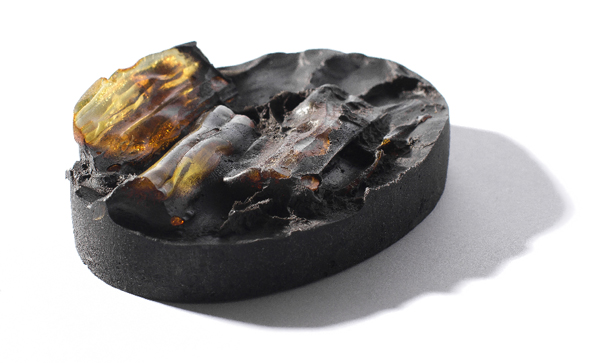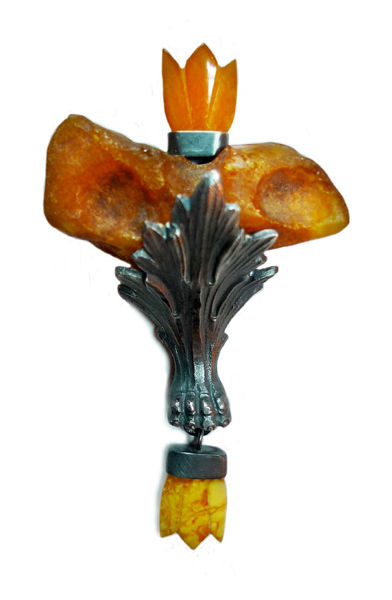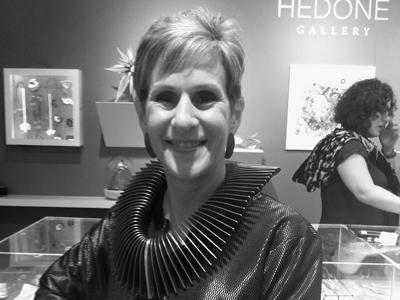
Bonnie Levine: Amber has been around for 40 to 60 million years and there’s a real mystique to it—it’s been traded, worshipped, and used for healing and protective purposes going back in time. Can you elaborate on the history of amber and why it’s important today?
Eva Melnika: Amber has always been known as the Baltic Gold—it can feel warm and fragrant, and the Etruscans valued amber even more than gold for its beauty and the healing properties they believed it held.

Bonnie Levine: Amber has been around for 40 to 60 million years and there’s a real mystique to it—it’s been traded, worshipped, and used for healing and protective purposes going back in time. Can you elaborate on the history of amber and why it’s important today?
Eva Melnika: Amber has always been known as the Baltic Gold—it can feel warm and fragrant, and the Etruscans valued amber even more than gold for its beauty and the healing properties they believed it held.

Eva Melnika: Amber has never really gone out of fashion. It has been encapsulated by the Soviet-era stereotypes of being a souvenir, but it has always been popular amongst mature ladies.
Steven Spielberg’s Jurrasic Park seems to have put amber in the spotlight. Is it having a renaissance moment? What brought it back into fashion?
Eva Melnika: It is having a renaissance moment, indeed. Amber is now being looked at as something that has captured the past. Amber has never been one of those materials artists tend to engage with due to its resinous luster and the presence of numerous air bubbles that can sometimes be found within it. Therefore amber presents itself as a challenging material to work with. As contemporary jewelry intends to push limits within the use of new styles and materials, amber has regained popularity, especially in contemporary jewelry.

Tell us about the exhibition at Putti, Amber in Contemporary Jewelry. What is the intent of the show?
Eva Melnika: Amber in Contemporary Jewelry is an engaging exhibition showcasing various uses of amber breaking away from the clichés that surround it. That is also the core of the exhibition.
There are 20 jewelers from the Baltic region in the show. Were they all working with amber before this show or not? Did you ask them to make special pieces for it?
Eva Melnika: The jewelers in the show live all the way from Russia to Italy and had not worked with amber before, but have experimented with the material especially for this exhibition.
The stage of the exhibit is designed by an internationally renowned fashion design brand, MAREUNROL’S. Is there a connection between contemporary amber jewelry and MAREUNROL’S fashion esthetic?
Eva Melnika: There is not a direct connection to it, but MAREUNROL’S has successfully managed to stage an innovative exhibition that historically links ancient times with the present.

What do you see down the road for the use of amber in contemporary jewelry?
Eva Melnika: Amber as a material is either loved or hated. There are numerous awards that promote amber’s use in contemporary jewelry, especially in Poland. As long as artists are not afraid to engage in further use of it, the future of amber in contemporary jewelry might be surprising.
Please tell us about the catalog you published along with this show. Who wrote the essays?
Eva Melnika: The catalog Amber in Contemporary Jewelry is a gloriously illustrated hardback document on amber and the exhibition that features essays written by a journalist from Latvia—Una Meistere.




